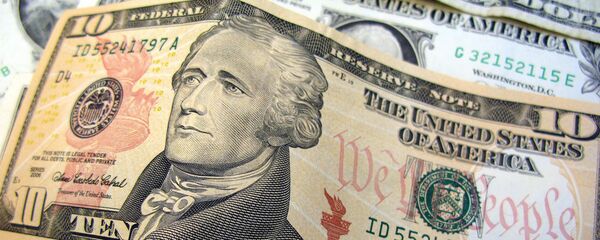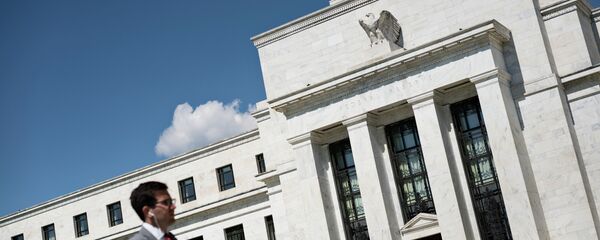Kristian Rouz — The US Federal Reserve will start their two-day Federal Open Market Committee (FOMC) policy meeting on 26 April and are expected to provide clues on whether or not they will raise base borrowing costs in June. The April meeting is largely expected to leave rates unchanged as, after a string of fundamentally weak macro data, the labor market report has come to disrupt the Fed's tightening cycle. Whilst the broader economy is still adding jobs robustly, growth in salaries and wages is stagnant due to the abundance of lower-qualified workers entering the job market. Therefore, tighter monetary conditions would have greater negative consequences for the already weak economic expansion, putting into question any hikes soon.
According to Goldman Sach's observations, a June hike would be most certain should the Fed return to their October rhetoric of US macro fundamentals being ‘nearly balanced' in their FOMC statement due at 2 PM on Wednesday. Previously, the Fed changed their wording from describing the US economic situation as ‘balanced' in mid-December, amidst the high-yield bonds' meltdown, to no mention of any ‘balance' in their January and March statements as Wall Street was retreating in that period whilst the broader economy was faltering.
"There is more room to run in this cycle and that means the Fed can afford to go slower on rate hikes in the beginning," Michelle Meyer of Bank of America Merrill Lynch said.
Currently, the financial market situation has changed to a slightly more positive one, with stocks having rallied for roughly a month, whilst the dollar has weakened somewhat, easing the pressure on the corporate sector, and allowing for a better trade and earnings performance in Q2. Standard & Poor's main stock index rebounded, posting a 2% gain for the year after the capital wipeout in January and February.
Janet Yellen, the Fed chair, said in late March the FOMC would "proceed cautiously in adjusting policy," a dovish message considered by many observers as a sign of a monetary environment to remain rather loose while the real economy underperforms. Overseas markets have provided weak demand for US goods and services this year thus far, and commodity prices are still low, hitting investment stateside.
"Global risks are here to stay although the seas are calmer around the globe at the moment," Chris Rupkey of New York-based Bank of Tokyo-Mitsubishi UFJ Ltd. said. "Caution is likely to rule the board and bank presidents. They aren't in any hurry."
Meanwhile, the US labor market, one of the key indicators of broader economic expansion and a Fed's factor the Fed's watches, showed signs of weakening salaries. As an increasingly significant number of low-qualified workers (high school diploma or less) enters the workforce, the downward pressure on wages is rife. Given the Obama administration's approach to job market puts jobs first, wages second, this trend makes sense, whilst in other situations the abundance of non-qualified labor would impair the broader employment situation, with less pressure on wages.
In the US workforce, the percentage of those 25 and older without high school education rose by 1.4% to 46.2% in March, the highest since pre-2007 level, while high school graduates added in numbers 0.5%. The percentage of college graduates in the workforce remained flat, according to data by the Labor Department. While $10/hr is an average salary for lower-qualified workers, it is far below the national average of $25.43/hr, and labor market dynamics do not suggest any positive change in the wage situation, potentially undermining near-term gains in consumption, the key driver to the economy.
Currently, US enterprises are adding about 200,000 jobs monthly, while some 400,000 workers are entering the labor market, rendering the jobless rate nearly unchanged since October at ‘full employment' of around 5% reported as jobless.





